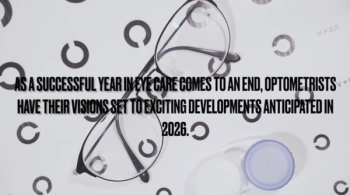
Immune cells play significant role in suppressing and resolving inflammation from autoimmune uveitis, study reports
Researchers found that in the acute phase of uveitis at day 18 after disease induction, the immune cells were specifically recruited to the lens capsule.
A new study published in The American Journal of Pathology took a deep dive into the role that immune cells play in the resolution of inflammation on the surface of the eye’s lens, specifically in autoimmune uveitis.1 The disease bypasses the eye’s immune privilege and can damage healthy eye tissue.
A team of researchers, led by Phuong M. Le, MD, PhD, took an immunolocalization approach with high-resolution confocal microscopy to investigate C57BL/6J mice with experimental autoimmune uveitis whether or not their immune cells that are stably associated with the eyes’ lens capsule have an immunoregulatory phenotype. During the acute phase of uveitis at day 18 after disease induction, the immune cells were found to be specifically recruited to the lens capsule. Said cells were also found to have putative anti-inflammatory, proresolution roles, such as regulatory T cells (FoxP3+CD4+) and M2 macrophages (CD68+ arginase 1+IL-10+), study authors reported. Additionally, lens capsule-associated immunomodulatory phenotypes increased at day 35 after induction during the resolution phase of uveitis inflammation.1
“Our results suggest a previously unknown role for the lens as a site for recruitment of immune cells whose role is to suppress inflammation, promote resolution, and maintain remission of experimental autoimmune uveitis,” the authors stated in the study.
“Debunking the thought that the eye could not care for itself is a big deal,” said A. Sue Menko, PhD, one of the study authors, in a recent article.2 “This helps us understand disease processes like uveitis and how they’re resolved in the eye. Maintaining a non-inflammatory condition in the eye is crucial to preserve vision, and we now know that the eye has inherent mechanisms to do that.”
Study authors stated that previous research has found that immune cells are specifically recruited to the lens capsule in response to autoimmune uveitis. Additionally, immune cells were also recruited to the cornea-facing anterior surface of the lens following an injury to the cornea in other studies. This recruitment was done by the cells by migrating across the ciliary zonules that link directly from the lens to the vasculature-rich ciliary body. The cells then extend along the lens surface of the eye.1
“Our findings that cells with anti-inflammatory, immunosuppressive phenotypes accumulate on the lens capsule of the eyes of mice with experimental autoimmune uveitis during inflammation and resolution not only support a novel role for the lens in ocular homeostasis but also reveal a potential source of immunomodulators that is likely universal across the spectrum of uveitis,” the authors stated.
Study authors also called for further studies to evaluate the mechanisms of immune regulation by lens capsule-associated immune cells to guide future approaches to uveitis treatment.1
References:
Phuong ML, Mattapallil MJ, Caspi RR, Stepp MA, Menko AS. Immunoregulatory properties of immune cells that associate with the lens capsule surface during acute and resolution phases of experimental autoimmune uveitis. The Am Journ of Pathol. 2024 August. doi:10.1016/j.ajpath.2024.07.021
Cunningham M, Muse Q. Jefferson investigates: equity in liver transplantation; immunity in the eye; inflammation in multiple sclerosis. Thomas Jefferson University. September 24, 2024. Accessed October 4, 2024.
https://nexus.jefferson.edu/science-and-technology/jefferson-investigates-equity-in-liver-transplantation-immunity-in-the-eye-inflammation-in-multiple-sclerosis/#eye-lens
Newsletter
Want more insights like this? Subscribe to Optometry Times and get clinical pearls and practice tips delivered straight to your inbox.













































.png)


